The French Revolution In A Box – Martin Wallace’s Liberte
March 22, 2018 by crew
“Vive la révolution!”
For much of the French population of the late 18th Century, these were words that symbolised terror and instability. From a constantly changing government/leaders, executions without due process to the looming threat of every monarchy in Europe wanting to snuff out the embers of Democracy, it was not a great time to be alive.
This sadly became the everyday life for the citizens of the New Republic of France. Thus, the French revolution is now a major lesson for future states on revolution or the application of a representative Democracy and this is the theme that is front and centre in the boardgame by famed designer Martin Wallace, Liberte.
The French Revolution came about for several reasons which are not the focus of today’s article but one I would like to point out for its historical irony. A lot of it came from Louis XVI’s support of the American Revolution, as it became a major factor in bankrupting the French state.
The finances were so bad that the King himself had to call in the Estates General to try to come to a majority agreement to tax the nobility, which promptly failed since the clergy and the nobility controlled two of the three estates. The big issue for the last estate, which consisted of everybody else was that they represented 97% of the population and yet had to carry the burden of high taxes for the top 3%. Thus this dissent exploded into open revolt which would lead to events we now call the French Revolution.
The boardgame Liberte spans the historical period beginning with the meeting of the Estates General and runs through to the Coup of Napoleon with three factions vying for power in France. The Moderates (Blue), Royalist (White) and Radicals (Red).
The player takes on the role of a political influencer who is trying to come out of the Revolution with as much power as possible by manipulating any or all of the three parties to achieve one's own goals. This is done by playing character cards from a hand of cards. It would seem apt to mention that every character, on every card of the game, is a historical character from the French Revolution, including of course Napoleon who was a moderate in these times of turmoil.
Now the above description might not sound like the most thematic of boardgames but that is hardly the case. Let me list some of the ways why to me, Liberte is the French Revolution in a box!
War On All Fronts!
Surrounded by Monarchies whose Kings/Emperors would rather, for the most part, keep the status quo of government as is it is no surprise that France found itself at war on every front they shared with another country at some point of the revolution.
What is surprising is that the revolutionary government, who fully expected this attack on several fronts if war broke out, decided that a good offence meant a good defence and declared war on Austria first to start off the first of these clashes in the French Revolution.
Three of the major battles of the period are shown on the board of Liberte. They are Valmy, Fleurus and Arcole. Thematically in game, if the players choose to ignore the battles, the French state will lose legitimacy and this allows for an easier immediate victory for the Royalist in France, which will be explained later in this article.
Also, if the player wishes to send troops to the battlebox then that player needs to give up a card with a cannon symbol on it to instead put a token in the battle box and give up the card’s political value. This being the case in history with orators (Mostly from the Moderate or Radical faction) putting aside their political differences and encouraging men to join the army, preaching a united stand against the common threat of the foreign invaders or to spread the word of revolution to the rest of Europe.
The big problem for the French army though was its leadership, as French generals were often targets in the republic's leadership. Almost any commander with battle experience was from the ex-nobility and thus their loyalty was always in question. Also, the government feared any general who got too powerful or popular.
For example, the hero of Valmy, Marshal Kellermann was imprisoned for thirteen months after he dealt with a revolt in Lyons for the government. This is well felt during play as general cards are hard to come by and even if you have a general that is needed to command the army for a battle to be won, you usually will not want to put him out too soon as it could mean his execution or exile by another player!
The Game Of Politics On The Tabletop
The focus of the revolution was to change the essential way the government of France was run and thus the true theme of Liberte is politics and thankfully none of the boring parts of it. It's more like what happened in Game Of Thrones! This truly comes out in the game as you can be as attached to a political group as you want.
One good historical example to emulate for victory though is Charles Maurice de Talleyrand-Périgord whose career spanned the years of Louis XVI, the whole revolution and well past the Napoleonic years. He almost always held a seat of power within whatever government was in power. In the game, this manipulation is done via drafting cards of historical personalities that have different political affiliations and sending them to build up support for their party in different areas of France to garner votes.
Now, what are the votes for? Well, they affect everything as if the game ends after four rounds, one counts up points accumulated from winning battles, positions in government and controlling certain areas of France but more often from my experience, someone will win via one of the immediate win conditions.
These are either that the Radicals get an amount of support in government that surpasses the election track for a Radical Revolution or as mentioned above the Royalist controlling areas with the Fleur-de-lis symbol win battles equal to or more than seven, representing a Royalist counter-revolution.
This themed goodness does not just end there. Each card also exudes theme with its use, such as with the Sans-Culottes, which in-game allows a player to hold on to one more personality for use in later turns. This is literally “breaking a rule” in the game and not surprisingly designer Martin Wallace has a historical reason behind why this is in the game.
The Sans-Culottes were the more modern phenomenon of the growing poor urban working class, those who were dependent on others for a living/wage, such as artisans, craftsmen and so on who did not own their own shops, farms. Now, like most people who were often hungry, poor and disgruntled, they were easily radicalised and formed a group of extremists for the revolutionary cause.
They were known as Sans-Culottes as they did not wear the knee breeches worn most often by the nobility. They were so numerous in Paris that on occasion they even broke into government assemblies to push through their demands and even put one of their own into the highest office of government, who worked alongside revolutionary star, Maximilien Robespierre, known as “The Incorruptible”.
The event cards too are tied to historical facts, such as bread shortages and not unlike Ancient Rome, no bread equals riots! The history behind the card was that in the periods before the revolution, there was a population boom in which France saw the population grow by six times more than the preceding two centuries. Add to this the money that came in from grain, directly funding the rich, and this resulted in a point of time in which a loaf of bread could equal a person’s monthly average wage.
It is also the little touches that are appreciated like with the Terror and Guillotine event cards which when used removes a character card of your choice permanently from the game. This is a threat looming so large that one is always reluctant to put out a useful character until one has to.
Historically, the terror was aptly named with several “Terrors” happening throughout the revolution and at its height with the ‘Great Terror’ upwards of 800 people died a day and no one was safe, even revolutionary stars like Georges Danton and Maximilien Robespierre would see their lives ended by the most defining icon of the revolution.
Last but definitely not least we have how France became a very centralised state with Paris it's beating heart. In game terms, this is represented by the Parisian vote. Each turn, the person who holds onto Paris can garner up to three votes for the election track whereas any other province only garners one at most. In history, unlike the American Revolution, where the states had more power than the central government, France’s revolutionary government in Paris could and did impose laws on everybody, such as everybody having to use the French language, dominant in Paris instead of their local dialect for example.
But There Is More...
There are so many ways in which Liberte shines in being not only a solidly strategic boardgame but also an extremely thematic one. And to prove the said fact, I started researching the French Revolution after playing this game and when you watch or read a something and go “Oh that is why that game mechanic does this”, then you know you've got good game design.
As a final note, if you are interested to get Liberte, I would suggest getting the Valley Games Edition as it has better components and fixes some issues the previous edition has!
Let us know in the comments below what you consider to be some of the most thematic Historical board games out there?
By Akaisamurai
Cheers and to all fellows; Liberty, Equality, Fraternity!
"The boardgame Liberte spans the historical period beginning with the meeting of the Estates General and runs through to the Coup of Napoleon with three factions vying for power in France..."
Supported by (Turn Off)
Supported by (Turn Off)
"I started researching the French Revolution after playing this game and when you watch or read a something and go “Oh that is why that game mechanic does this”, then you know you've got good game design..."
Supported by (Turn Off)









































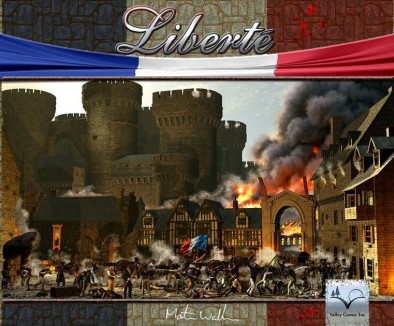
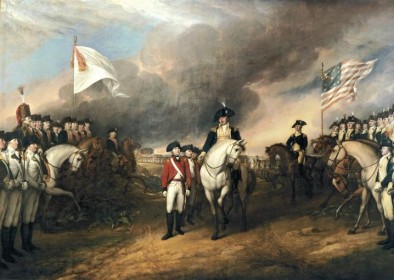
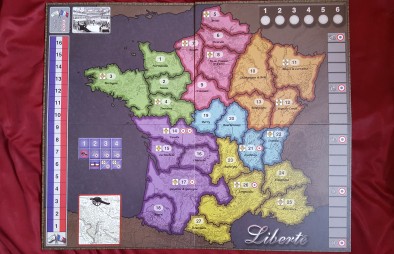
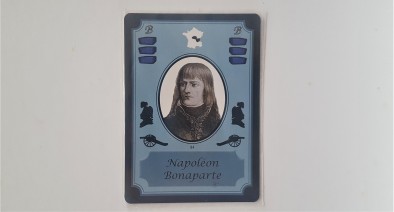
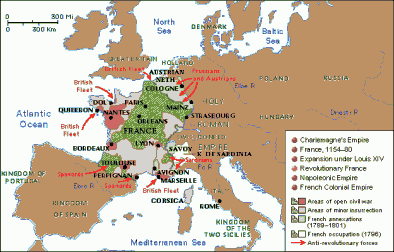
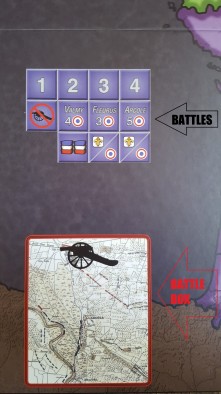

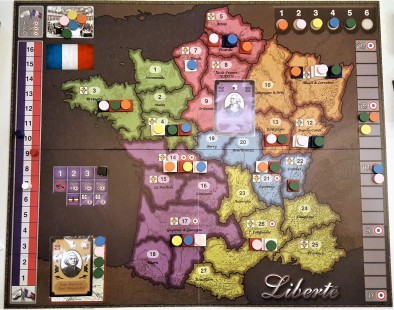
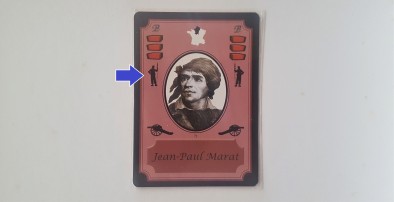


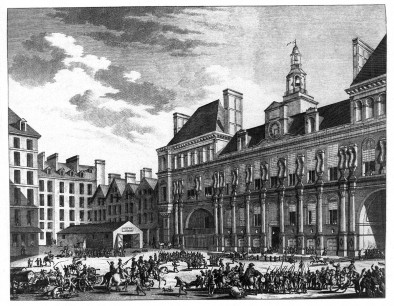
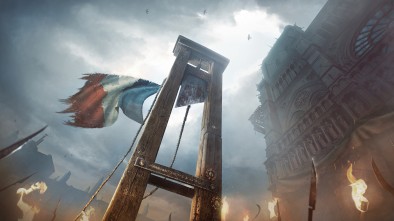


































Great article about what looks to be an interesting game. Games that deal more with economic or socio-political changes like this walk a thin line, especially in communities and markets that favor more kinetic “action” conflict games. The subjects tackled can be much more nebulous, so the trick is to balance abstraction with excessive detail. Who can forget the marathon games of Avalon Hill’s Diplomacy, “Destroying Friendships Since 1959” ? Twilight Struggle is a more recent example of this kind of strategic-level game, where most of the “war”game decisions may not be military in nature at all, but clearly you’re… Read more »
Thanks for the detailed comment @oriskany! Yes, the balance of historical detail/theme and abstraction is what makes a game successful nowadays. I use to be a avid wargamer but found that I could not find the groups or time to play the chit GMT wargames for example, thus making the investment on them coming down to just opening the box and imagining a game being played. That is why I love Martin Wallace as many of his games work for both a thematic and strategy crowd and plays within a time gamers are willing to try the game. On top… Read more »
Great article – thanks @akaisamurai
This sounds really, really interesting. I’ve never studied the French revolution, but always thought that it sounded fascinating. There’s so much focus on Napoleonic France and the Napoleonic wars that i think the period before his leadership can get overlooked.
This game sounds like it would be a fun way to kick of learning about it…
@angelicdespot, It is and the best thing I have played it with 3 to 6 players and it works for all player counts. Although 4 or more is where the theme of vicious politics really comes in. Also, you are right that Napoleon is such a dominant figure in that period that it is easy to oversee why the French People were so accepting of his blatant self-rule even as First Consul. And the reason, well the chaos and unfulfilled promises of the Revolution thus showing that expectations never really live up to reality especially when it comes to the… Read more »
Wow an incredible article on a very cool looking game. @angelicdespot I totally agree sometimes it just takes a few games then you start Googeling peoples Names, looking up the in game events and before you know it you’ve got a solid base to build on all while having fun. @oriskany it looks like it takes place right after the Revolution takes power. Arcole was 1796 and I believe Louis was killed in 92. I like the different factions struggling for power while still making sure the Royalists don’t strike while they’re preoccupied. Mix in some wacky cults (the Cult… Read more »
@elessar2590 Ha yes, the period has a lot of hidden gems the more you look into it, like how modern BDSM is often linked back to De Sade and such.
And I agree as I got to say one of the fun parts of playing Liberte is doing a French Accent and spouting Revolutionary rhetoric if the playing crowd is into that or if you are lucky enough to play with French natives and then find out how different the names sound when the French pronunciation is used instead of English, lol.
It looks good
GMT made one of my favourite games of all time which is Down in Flames
I hope any clocks or timers in the game are using the decimal system
@torros, this is a Valley games production and ah GMT I love their games but just dont have the crowd or time to play them. And ha no clocks in the game but if you win Liberte, then I guess you can change that fact “historically”.